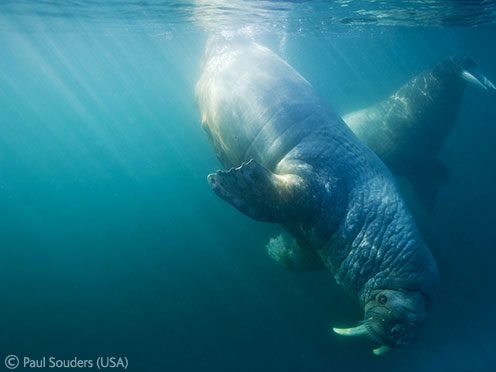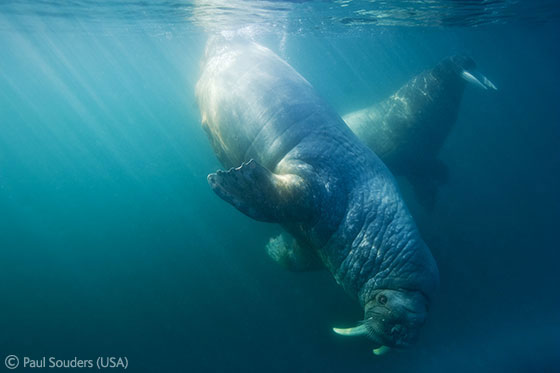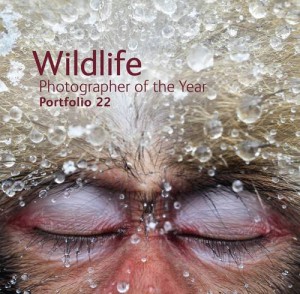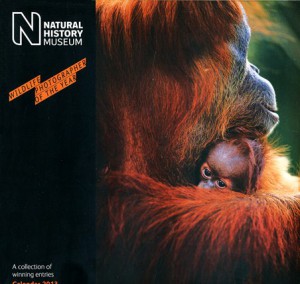We are marking the forthcoming publication of the new 2012 portfolio from the annual Wildlife Photographer of the Year exhibition with a mini-series of interviews with some of the category winners from last year.
Our third and final interviewee is Paul Souders, who won the Underwater World category in 2011.
You won the Underwater World category in last year’s competition with “The grace of giants” (left). Can you describe the special challenges, and special appeal, that underwater photography must have?
I come from a long line of Pennsylvania dirt farmers here in the US. We are, by our very nature, sinkers not swimmers. I’ve been a professional photographer all of my working life, but it was only in 2005 that I learned to dive and then to photograph underwater. It was an entirely new world, with a vast array of new subjects to shoot and new techniques to learn.
I’ve enjoyed the opportunities it’s presented to expand my view of the natural world and the discipline it has required. Photographing large, unpredictable subjects like a giant walrus in ice-cold sea water at the edge of the world is not for the faint of heart. I can’t imagine that more than a handful of people have deliberately gone swimming with a walrus in the Arctic oceans, but it’s an amazing privilege to witness the sight of them gently gliding in their natural environment.
Could you reveal a bit about the photo and how you got the shot?
I’d imagined this photograph for years, but it took a lot of planning and effort to make it happen. I had to charter a steel-hulled yacht in Svalbard, 600 miles north of Europe’s edge, and drag hundreds of pounds of scuba and other underwater gear from my home in Seattle through four different airports. Walrus are by reputation, large, aggressive and unpredictable. It took an enormous leap of faith to get into the water with them. But sometimes you just have to hope for the best. We’d sailed to one of their haul-outs in the Svalbard archipelago, and found a few of them swimming in the water. I quickly put on all of my gear and then, as last-minute nod to safety, tied an old piece of rope around my waist for the boat skipper to hold onto. And then I slid off the iceberg and into the water.
I could see the walrus circling below me in the depths, and they slowly came up, equal parts wariness and curiosity. They seemed impossibly big, but quite graceful and gentle as they swam towards me. One grew bold, and was soon pressing his whiskers and tusks against my camera’s glass dome. He even gave it a little tap, just to see if I was paying attention.
Apparently blue-lipped, hyperventilating photographers aren’t all that distracting after all, since they soon swam off, taking one last look at me before diving again into the depths.
And your tips for aspiring wildlife photographers?
Probably the best advice I can offer is “don’t quit your day job.”
There has never been a better time to be a nature photographer. In the last decade, we have witnessed a revolution in digital photo technology. Guided tours travel to wilderness areas that were once the sole province of National Geographic and BBC film crews.
Of course, there has never been a worse time to make a living as a nature photographer, since everyone and their dog can now go out on holiday, make amazing pictures and give them away on the internet for nothing.
The hard part for professionals is thinking of images that will show the world in a new way, to create pictures that people haven’t seen before. It requires a level of dedication and perseverance that should give any sane person pause.
Paul Souders’s website:
Read part one: Wildlife Photographer of the Year winning inspirations, part one: Steve Mills on “The assassin”.
Read part two: Wildlife Photographer of the Year winning inspirations, part two: Peter Chadwick on “Taking off”.




